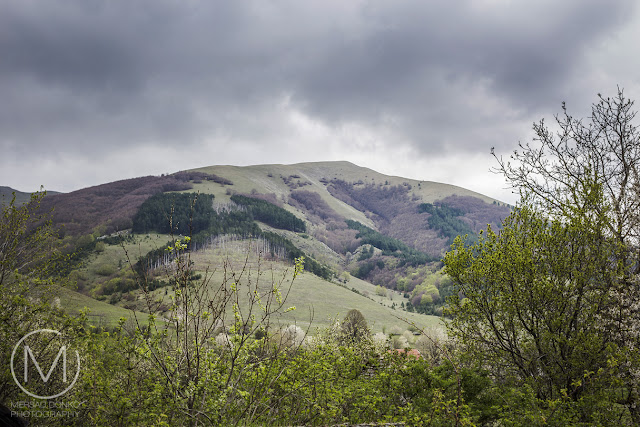In part two we arrive in the small village named Krusevljani, located a couple of miles of the main road we were traveling on, and in the municipality of Nevesinje. It's an old village, which can be immediately seen once you enter it.
The times have taken over the place, and nature is covering up the remains of houses and paths. Some people still live here, but it's a very harsh life.
This is a multi-part series. Other parts include:Part One: The Drive East
Part Two: Inside the Village
Part Three: Plains and Mountains of Herzegovina
Part Four: The Abandoned School
Part Five: Goodbye to the Past
click on the images for a bigger view
The first image shows the complete village. I took this from a hill we visited later on (but more on that in part three). On the last census of people living in these regions (which was way back in 1991), the village counted 157 people. But now, after the war, that number has dwindled down considerably. I don't think that more then 30 people live here now.
This was also a personal journey for us. Parts of my friend Selma's family come from here. Her grandfather used to live here, before the war, until he moved away to Mostar. She wanted to visit the house that he lived in.
Upon meeting some relatives, who still live here, we took a hike through the village, and eventually ended up on a path through the woods that were covering the way, until we reached our destination.
Not much of her grandfather's house remains. The outside walls still stand, but the roof is completely missing, and the inside has been taken over by trees and bushes.
Parts of the original roof still remain, and offer up a glimpse of what once was.
There are other remains of houses in the near vicinity, all dotted throughout the woods. In some ways it's quite spooky to stand here, and be reminded how all of this came to be.
A memorial was built in the center of the village, commemorating the inhabitants of the village who were killed in the war from 1992-1995.
Through the trees you can see the mountains in the distance. During the war people tried to escape through the hills and woods, and find shelter on the other side of the mountain. Unfortunately most of them didn't manage to survive.
Besides the memorial, there has been other new things here. In the middle of the village a mosque was built. You can see it in the next image, peaking out of the woods.
Dark clouds began to roll in and they promised rain, so we made our way back to the car to continue our trip.
As you can see here, there are no roads left in the village. There are paths and trails you can follow from house to house. In the dark a certain feeling of melancholy overcame us.
The people who live here, mostly survive by agriculture, as is evidenced by the image below. There you can see a shelter for potatoes, that are stored there after harvest during the winter months.
On the edge of the village, a different sight waited for us: wide plains. We knew we wanted to see more of them.
We went back to the car and drew further into the landscapes.
The road took us up hill, where we came upon some stunning scenery and nature. We were overlooking the whole aeria from up there. But more on that in part three.
End of Part Two
To be continued...
Thank you so much for visiting. I am really glad you are enjoying the series. The response for part one was quite big. I promise you that the best is yet to come.



























0 comments:
Post a Comment